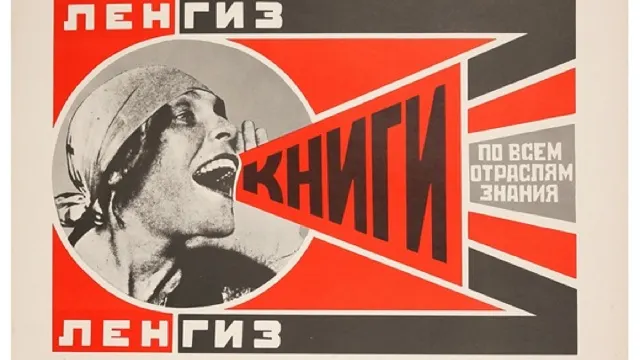Agitprop is political propaganda, especially in the form of art or literature, which is used to advance a political stance.
A portmanteau of “agitation” and “propaganda,” the term refers to political strategy in which communication tools such as literature, plays, posters, or other visual or auditory materials are utilized to disseminate a particular ideological stance or to mobilize the public towards a specified political action.
Origin of “Agitprop”
The term originated in Soviet Russia and is an abbreviation of agitatsiya propaganda (agitation propaganda.) Propaganda was a key aspect of Soviet governing strategy.
In a 1902 pamphlet, What Is to be Done, Vladimir Lenin set out his beliefs about the roles of propaganda and agitation.
In Lenin’s view, each had an important role to play. The propagandist worked mainly in print and produced logical analysis of social problems like poverty. The agitator, for his part, operated on an emotional level, rousing people to take an interest in social ills.
By the 1920s, the Agitation and Propaganda section was a well-established part of the Soviet government. The section operated at the most local level, and agitators were the Party’s chief means of communication with most people. Posters, sculptures, and paintings – usually done in a stylized, hyper-realist style – also were a major part of Russian agitprop.

Agitprop is also deeply rooted in today’s North Korea.
The posters and statues produced by North Korea’s government look like something straight out of a 1950s-era Soviet propaganda department.
The leaders depicted are different, of course, but the stylized, heavy-handed imagery is the same. And today, decades after the fall of the Soviet Union, North Korea continues to churn out posters of beaming factory workers.
In the west, the term “agitprop” is usually associated with artist and left-wing causes. The work of street artists like Banksy is often described as agitprop.
Certain conservative pundits argue that the entire output of Hollywood amount to “pro-communist” agitprop. But the term isn’t restricted to the left. It’s also thrown around – usually in a derogatory sense – to describe anyone who tries to push a strong ideology.
Rep. Alexandria Ocasio Cortez (D-NY) has often been described as a master of agitprop. Ocasio Cortez is widely acclaimed for her use of social media and her ability to stir people with slogans and imagery. Her critics, though, complain that Ocasio Cortez veers to close to Soviet-style propaganda.
Conservatives said that a series of posters that Ocasio Cortez produced in 2019 looked “like something the Soviet Union would post throughout the Red Square.”
Steve Bannon, a former adviser to President Donald Trump, is also seen as a master of agitprop. Bannon was at the helm of the conservative Breitbart Media, but he also spent many years working in Hollywood, as a producer and a director. Bannon directed a series of documentaries, including one about the Tea Party movement (“Battle for America”) and another about the Occupy movement (“Occupy Unmasked).
Bannon himself once said that his goal was to “overwhelm” his audience. Bannon’s critics wrote that watching the documentaries was like being in an “agitprop fever-dream.”
Use of “Agitprop” in a sentence
- The government’s use of agitprop to promote its policies has been criticized by opposition parties as propaganda.
- Many people believe that the television news program is little more than agitprop for the ruling party.
- The opposition party has accused the government of using agitprop to distract the public from its own scandals.